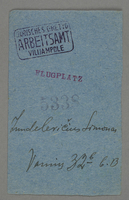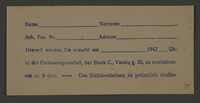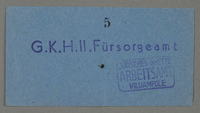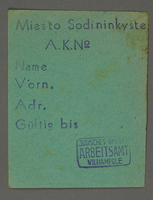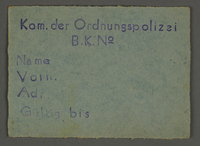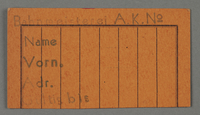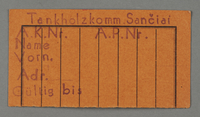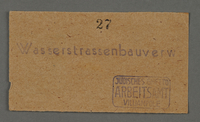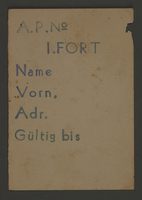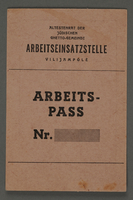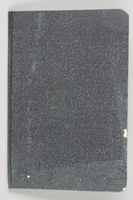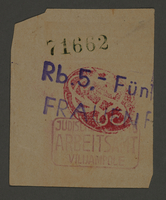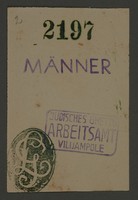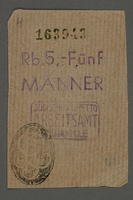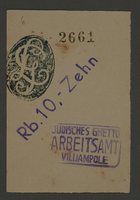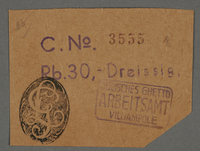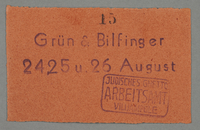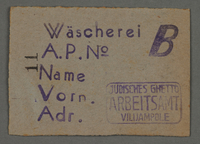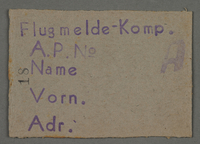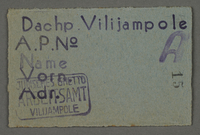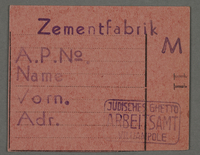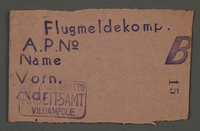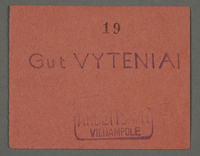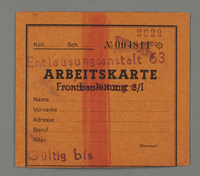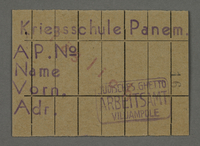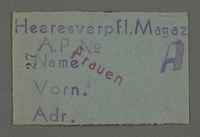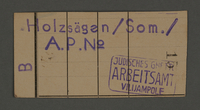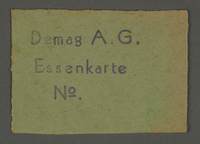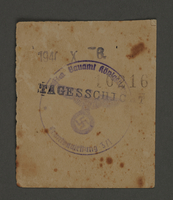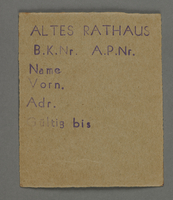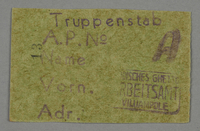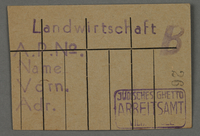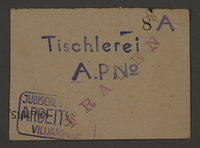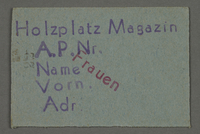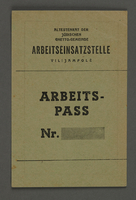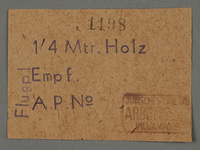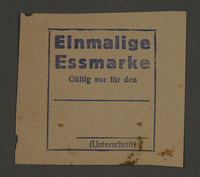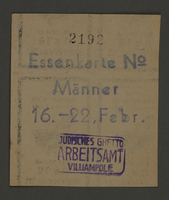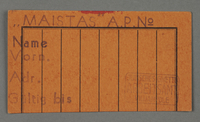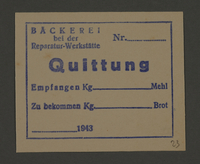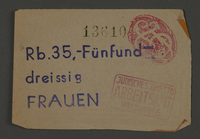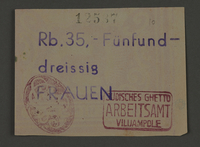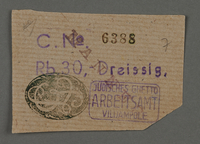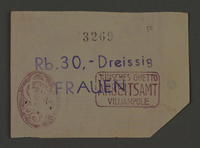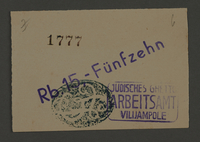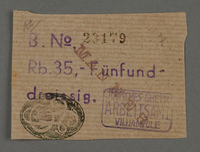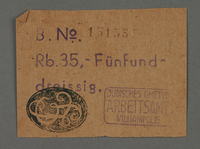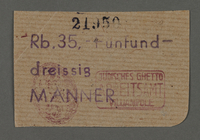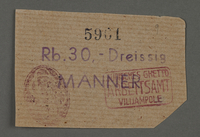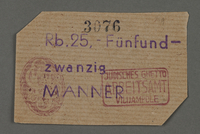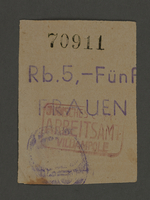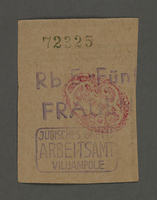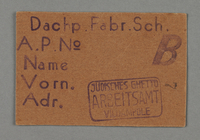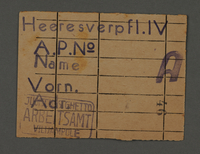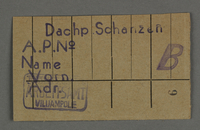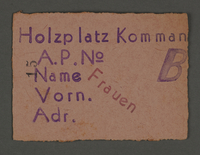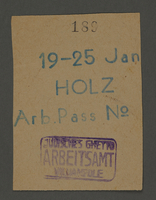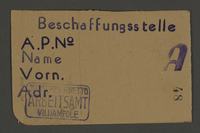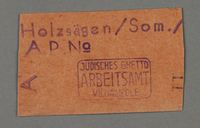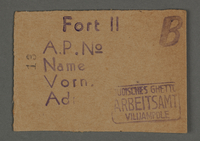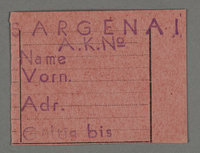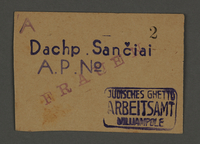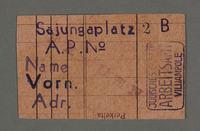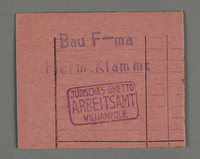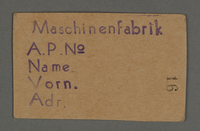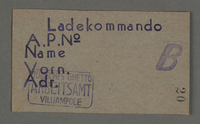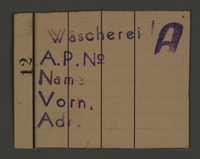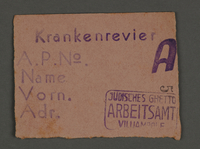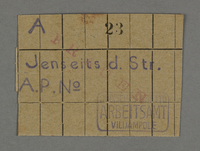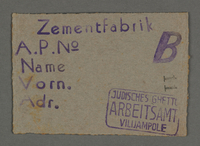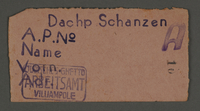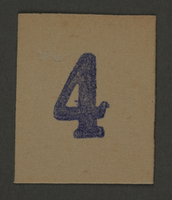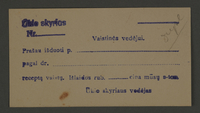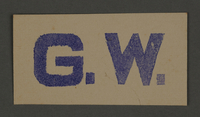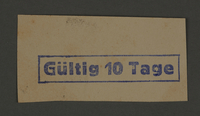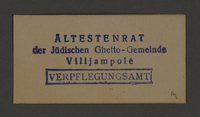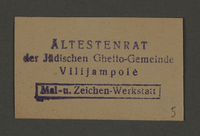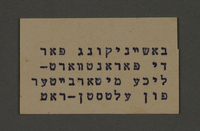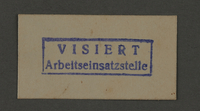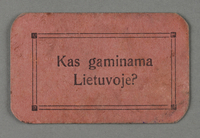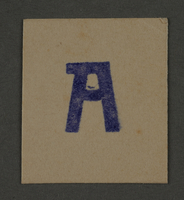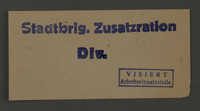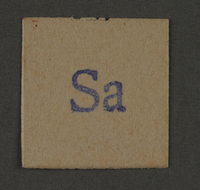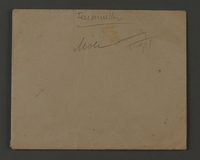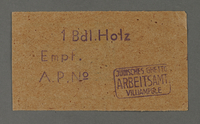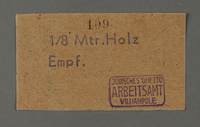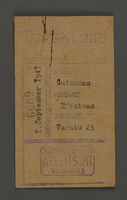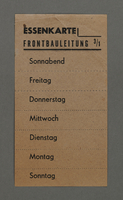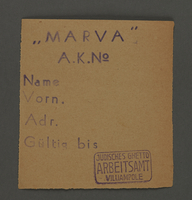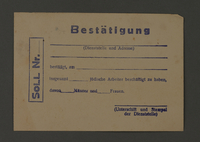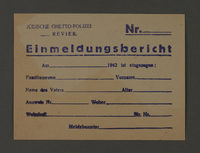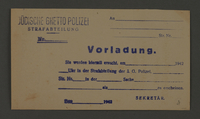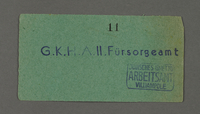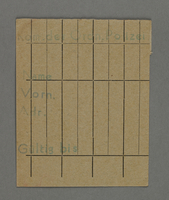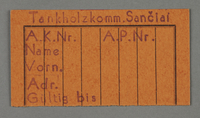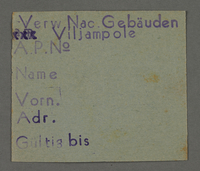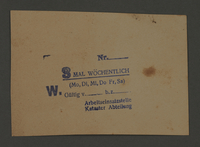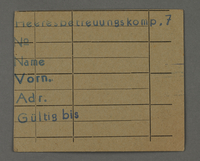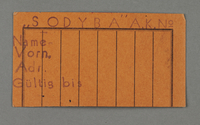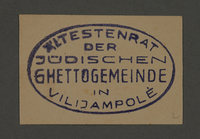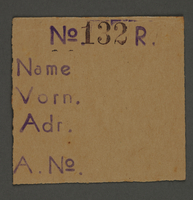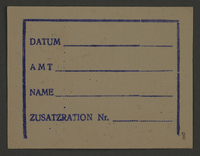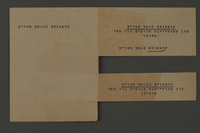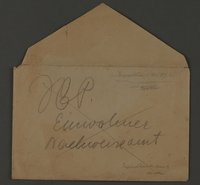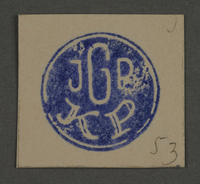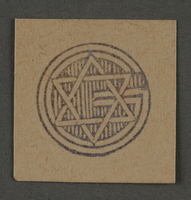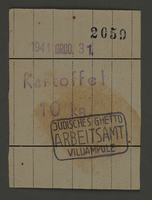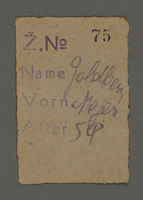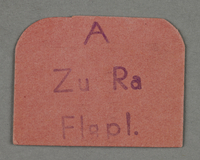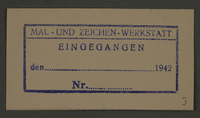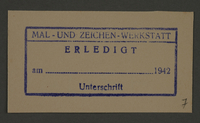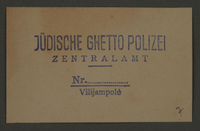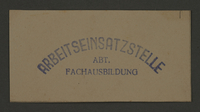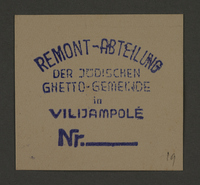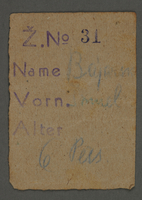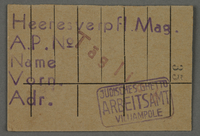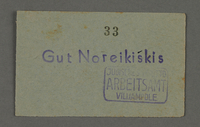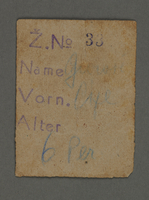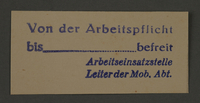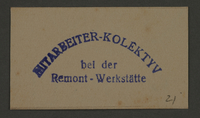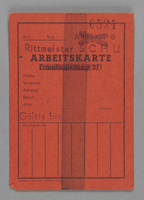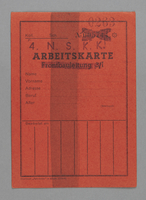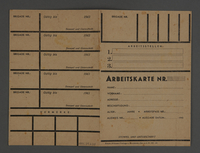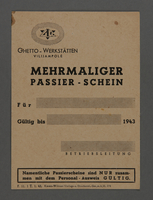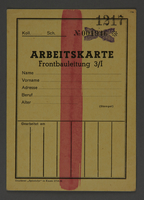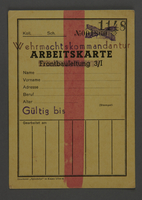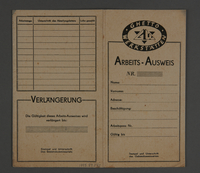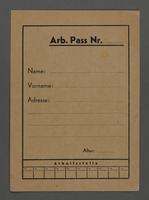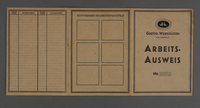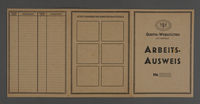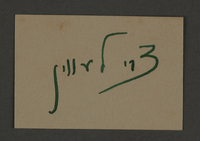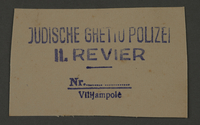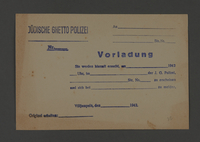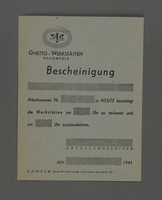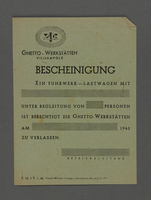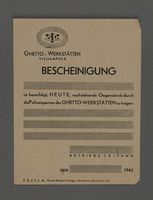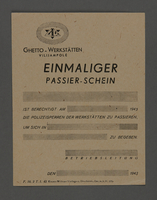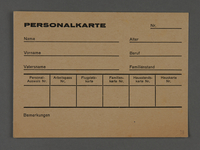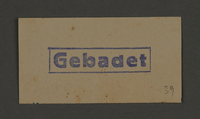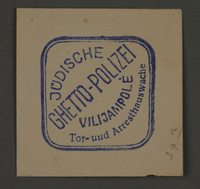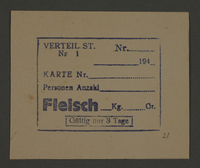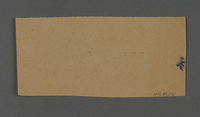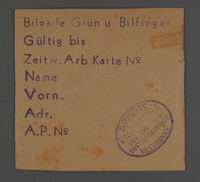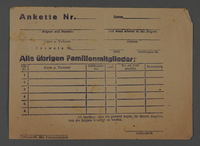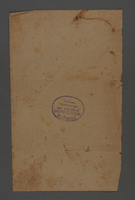Overview
- Brief Narrative
- Insignia found in the Kovno ghetto by Ephraim Guttmann, an airport worker and burial society member. In June 1941, Germany invaded and occupied Lithuania and by August, they had forced the Jews in Kovno into a ghetto. In July 1944, as Soviet forces were approaching Kovno, the authorities deported the remaining Jews in the ghetto to Stutthof and Dachau concentration camps and then burned it down. Ephraim survived by hiding in the bunkers. When the Soviet Army liberated the city on August 1, 1944, he was the first to collect and gather items remaining in the ghetto, including drawings, armbands, and hundreds of paper ephemera items. The “A” in this insignia patch more than likely stands for ‘arbeitsamt’ or ‘labor office’. This insignia is typical of what was produced by the Kovno ghetto graphics office headed by designer Peter “Fritz” Gadiel. Since the Germans prohibited radios and newspapers, the alternative was posting announcements within the ghetto. Elchanan Elkes, the Ältestenrat Chairman, turned to Gadiel to establish the graphics office, the Paint and Sign Workshop. Initially, the workshop provided simple signs to communicate orders to the ghetto residents, but eventually employed more artists and workers to create a wide range of items including ghetto currency, work passes, insignia, armbands and documents.
- Date
-
use:
1941-1944
- Geography
-
use:
Kovno ghetto (historic);
Kaunas (Lithuania)
- Credit Line
- United States Holocaust Memorial Museum Collection
- Contributor
-
Designer:
Fritz Gadiel
Original owner: Ephraim Guttmann
- Biography
-
Fritz Gadiel was born in Germany in 1910. His training as a graphic artist began in Germany during the late 1920s-early 1930s, including study at the Bauhaus with Ludwig Mies van der Rohe. He was well on his way to a promising career as a graphic artist. After Hitler rose to power, Gadiel fled Germany. In 1939 he married Renée Silverman and they settled in Kovno to join her relatives. Since the Germans prohibited radios and newspapers, the alternative was posting announcements within the Ghetto. Elchanan Elkes, the Ältestenrat Chairman, turned to Gadiel to establish the graphics office, the Paint and Sign Workshop. Initially, the workshop provided simple signs to communicate orders to the ghetto residents, but eventually employed more artists and workers to create a wide range of items including ghetto currency, work passes, insignia, armbands and documents. Gadiel's workshop also served as a cultural center, presenting an art exhibition, and a records center containing archives with examples of nearly all the ghetto's official drawings, certificates, forms, and stamp impressions being hidden there. In July 1944, the ghetto was liquidated, and the Germans discovered him hiding there with others in a bunker built within the workshop. Gadiel was deported to Dachau, Renée was deported to Stutthof, the both survived. Their three year old son, Raanan, who was born in the ghetto, fell into German hands and along with other children, was killed.
[Klein, Dennis B., ed The Hidden History of the Kovno Ghetto. Boston: Bulfinch Press, 1997, p. 111-113]
Ephraim Guttmann survived the Kovno Ghetto where he was an airport worker and worked in the Burial Society. During and after the bombing of the Ghetto in 1944, he hid in the bunkers. When the Russians liberated the city, he was the first to "pick" at the remains in the Ghetto. As the story goes, he found Esther Lurie's drawings, and also Jacob Schlesinger's in addition to at least 50 unused armbands (which were eventually sold to Yad Vashem) and hundreds and hundreds of passes, permits, Ghetto money, signs, logos, work cards, and other ephemera. Upon his death, he left a suitcase full of these materials to his daughter, Sara Milo.
[taken from memo written by Special Exhibitions found in file MILO SARA. kyra schuster 2/17/98]
Physical Details
- Classification
-
Identifying Artifacts
- Category
-
Badges
- Object Type
-
Insignia (lcsh)
- Physical Description
- Circular leather badge with an image of a light green, 6 pointed Star of David on the front with a painted black letter "A" in the center. The star is on a dark green circular background surrounded by four concentric circles in white, gold, light green, and gold. The reverse is white leather.
- Dimensions
- overall: | Diameter: 1.375 inches (3.493 cm)
- Materials
- overall : leather, paint, ink
Rights & Restrictions
- Conditions on Access
- No restrictions on access
- Conditions on Use
- No restrictions on use
Keywords & Subjects
- Topical Term
- Forced labor--Lithuania--Kaunas. Jewish ghettos--Lithuania--Kaunas. Graphic artists. Jewish ghettos.
- Geographic Name
- Kaunas (Lithuania)
Administrative Notes
- Legal Status
- Permanent Collection
- Provenance
- The badge was acquired by the United States Holocaust Memorial Museum in 1995.
- Record last modified:
- 2023-06-16 08:25:24
- This page:
- https://collections.ushmm.org/search/catalog/irn10080
Download & Licensing
In-Person Research
- By Appointment
- Request 21 Days in Advance of Visit
- Plan a Research Visit
- Request to See This Object
Contact Us
Also in Kovno ghetto collection
The collection consists of artifacts, drawings, documents, and scrip relating to life in the Kovno (Kaunus) ghetto in Lithuania before and during the Holocaust.
Date: 1941
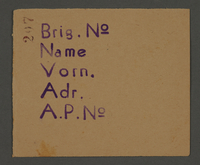
Pass from the Kovno ghetto
Object
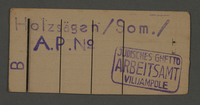
Pass from the Kovno ghetto
Object

Pass from the Kovno ghetto
Object
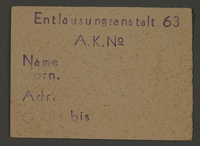
Pass from the Kovno ghetto
Object
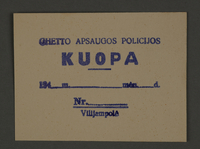
Permit
Object
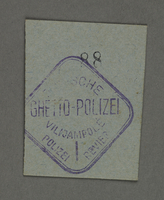
Ticket
Object
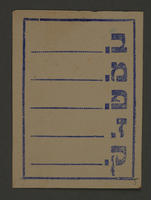
Permit from the Kovno ghetto
Object
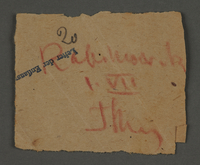
Notes
Object
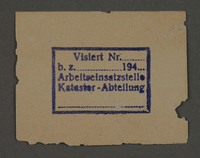
Permit
Object
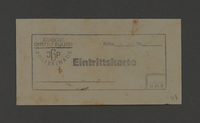
10252
Object

Pass from the Kovno ghetto
Object

